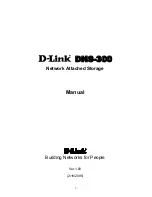
Chapter 22: WAN Configuration Guide
316
SmartSwitch Router User Reference Manual
Using the same approach, a PPP high-speed serial interface (HSSI) WAN port located at
router slot 3, port 2 would be identified as “hs.3.2”.
Configuring WAN Interfaces
Configuring IP & IPX interfaces for the WAN is generally the same as for the LAN. You
can configure IP/IPX interfaces on the physical port or you can configure the interface as
part of a VLAN for WAN interfaces. However, in the case of IP interfaces, you can
configure multiple IP addresses for each interface. Please refer to
“Configuring IP
Interfaces and Parameters” on page 87
and
“Configuring IPX Interfaces and Parameters”
on page 248
for more specific information.
There are some special considerations that apply only to WAN interfaces; these are
detailed in this section.
Primary and Secondary Addresses
Like LAN interfaces, WAN interfaces can have primary and secondary IP addresses. For
Frame Relay, you can configure primary and secondary addresses which are static or
dynamic. For PPP, however, the primary addresses may be dynamic or static, but the
secondary addresses must be static. This is because the primary addresses of both the
local and peer routers are exchanged during IPCP/IPXCP negotiation.
Note:
There is no mechanism in PPP for obtaining any secondary addresses from the
peer.
Static, Mapped, and Dynamic Peer IP/IPX Addresses
The following sections describe the difference between static, mapped, and dynamic peer
IP and IPX addresses and provide simple command line examples for configuration.
Static Addresses
If the peer IP/IPX address is known before system setup, you can specify the peer address
when the interface is created. This disables Inverse ARP (InArp) for Frame Relay on that
source/peer address pair; however, InArp will still be enabled for any other addresses on
that interface or other interfaces. A static peer address for PPP means that the address the
peer supplies during IP Control Protocol (IPCP) or IPX Control Protocol (IPXCP)
negotiations will be ignored.
The following command line displays an example for a port:
interface create ip IPWAN address-netmask 10.50.1.1/16 peer-address
10.50.1.2 port hs.3.1
Содержание SmartSwitch Router
Страница 1: ...SmartSwitch Router User Reference Manual 9032578 04...
Страница 12: ...Notice 12 SmartSwitch Router User Reference Manual...
Страница 28: ...Preface 28 SmartSwitch Router User Reference Manual...
Страница 68: ...Chapter 3 Bridging Configuration Guide 68 SmartSwitch Router User Reference Manual...
Страница 74: ...Chapter 4 SmartTRUNK Configuration Guide 74 SmartSwitch Router User Reference Manual...
Страница 84: ...Chapter 5 DHCP Configuration Guide 84 SmartSwitch Router User Reference Manual...
Страница 108: ...Chapter 7 VRRP Configuration Guide 108 SmartSwitch Router User Reference Manual...
Страница 207: ...SmartSwitch Router User Reference Manual 207 Chapter 12 Multicast Routing Configuration Guide...
Страница 208: ...Chapter 12 Multicast Routing Configuration Guide 208 SmartSwitch Router User Reference Manual...
Страница 222: ...Chapter 13 IP Policy Based Forwarding Configuration Guide 222 SmartSwitch Router User Reference Manual...
Страница 232: ...Chapter 14 Network Address Translation Configuration Guide 232 SmartSwitch Router User Reference Manual...
Страница 254: ...Chapter 16 IPX Routing Configuration Guide 254 SmartSwitch Router User Reference Manual...
Страница 270: ...Chapter 17 Access Control List Configuration Guide 270 SmartSwitch Router User Reference Manual...
Страница 282: ...Chapter 18 Security Configuration Guide 282 SmartSwitch Router User Reference Manual...
Страница 294: ...Chapter 19 QoS Configuration Guide 294 SmartSwitch Router User Reference Manual...
Страница 298: ...Chapter 20 Performance Monitoring Guide 298 SmartSwitch Router User Reference Manual...
Страница 338: ...Chapter 22 WAN Configuration Guide 338 SmartSwitch Router User Reference Manual...
















































